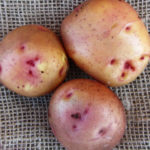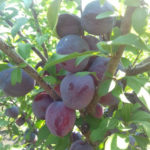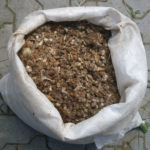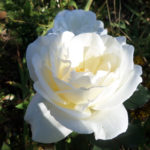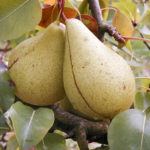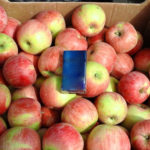Rose Goldelse
Varietal crops grown in the Tantau nursery are famous all over the world for their attractive appearance, not devoid of originality. As an example, we can cite a variety of roses with the aristocratic and somewhat pretentious name Goldelse, which has not only luxurious flowers, but also excellent immunity.
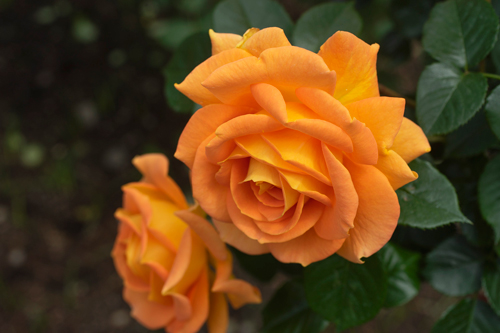
History of creation
The plant was bred by German breeders in 1999. It belongs to the floribunda group. Other names for this rose can be found in different sources: Bowled Over, Barley Gold, Golden Fancy, Mulbry Rose, TANdolgnil and Gold'n'Fancy. At the international competition in the city of Baden-Baden, the variety received a gold medal for its delightful flowering.
Description of appearance and features
Goldelse is a compact, dense and rather lush shrub with a height of 60 to 70 cm and about the same width. Ornamental perennial shoots are usually erect, but may also tend to branch. Dense buds are formed in inflorescences of 3-5 pieces and after opening are double, nostalgic, iridescent golden-amber flowers of medium size (6-10 cm in diameter), in the color of which copper or orange notes are often traced. Their petals (about 25 in each bud) are slightly corrugated. The flowers exude a light, sweetish, fruity aroma and effectively contrast with the olive green glossy foliage. The shrub blooms early. Fragrant inflorescences stay on the culture for a long time: from 10 to 14 days. Goldelse is a multi-flowering variety. The peak of its abundant flowering occurs in the first summer month. In general, in appearance, our heroine is very reminiscent of the Bernstein Rose variety, but the shade of her flowers is deeper, and the German beauty looks neater.
This rose is not damaged by frost down to -29 ° C. For this reason, the culture cultivated in the southern regions can winter without shelter. The plant has medium resistance to fungal diseases. This concerns, first of all, powdery mildew and black spot. The rose bush is rarely affected by pests. The flowers of the noble plant are highly resistant to rain and do not fade in direct sunlight.
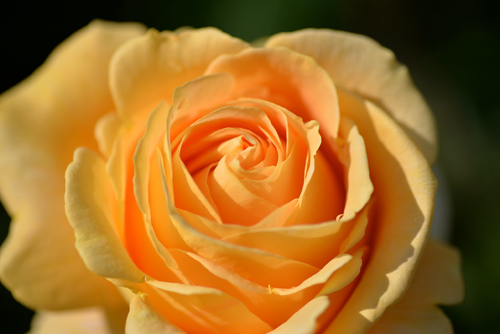
Growing and care
For full flowering, the culture needs as much light as possible. But in the most open spaces, it is nevertheless better not to plant it, since the perennial does not tolerate cold drafts and gusty winds. The shrub grows well in openwork partial shade.
The soil of the Goldelse variety needs moderately moist, light, rich in nutrients. Loamy soil is most suitable for planting a rose. If you plan to use ordinary leafy soil, then pre-mix it with turf soil, humus, peat and sand. In the place where you will dig the planting hole, the groundwater level should be at least one meter. At the bottom of the hole, a layer of drainage material is laid - fine crushed stone or gravel. Too long roots of a seedling are shortened before planting, then placed in a special solution that stimulates the growth of the root system. At the end of planting work, the plant is watered, then the ground in the zone of the trunk circle is mulched with dry grass or peat in order to avoid rapid evaporation of moisture from the soil.
Moistening the soil under Goldelse is carried out 1-2 times a week, spending 1-1.5 buckets of soft water at room temperature for an adult rose bush. With the onset of autumn, the number of waterings is reduced. The plant is fed twice a month. In the spring, organic matter is used for this purpose, during the appearance of buds and two weeks after the end of flowering - phosphorus-potassium concentrate. In addition, the flower periodically requires weeding, loosening and mulching. The last two procedures are carried out a day after watering.

In the spring, pruning of ornamental shrubs is performed. During this event, damaged and dry shoots are removed. The weaker the plant, the more careful spring pruning should be.It is not recommended to trim the floribunda in autumn, but it is imperative to spud the perennial with dry soil and cover it with spruce branches or non-woven material. The rose needs preventive treatment with insecticides and fungicides, which should be carried out several times during the growing season. This measure will reduce the risk of pests and various diseases on the plant.
Use cases
The Goldelse variety can be found in a park, garden, flower garden and rose garden. The small size of this rose allows you to place it on the sides of garden paths, in curbs, on a variety of flower beds, be it a classic round, mixborder or rabatka. Golden yellow roses with a copper or orange tint are suitable for placement in group and single plantings against the background of a grassy lawn. They will also be appropriate near the gazebo, along the fence, at the entrance to the house. Compositions that include miniature conifers along with plants of this variety look great. The romantic beauty Goldelse also looks impressive surrounded by decorative leafy crops, fragrant herbs and modest cereals. Floribunda is ideal for planting in containers that can be placed on balconies, terraces, verandas, rooftops, wide country porch and stairs leading to it. They also use beautiful flowers to create floristic compositions, especially since they stand in water for a long time without changing their appearance and without losing their freshness.
